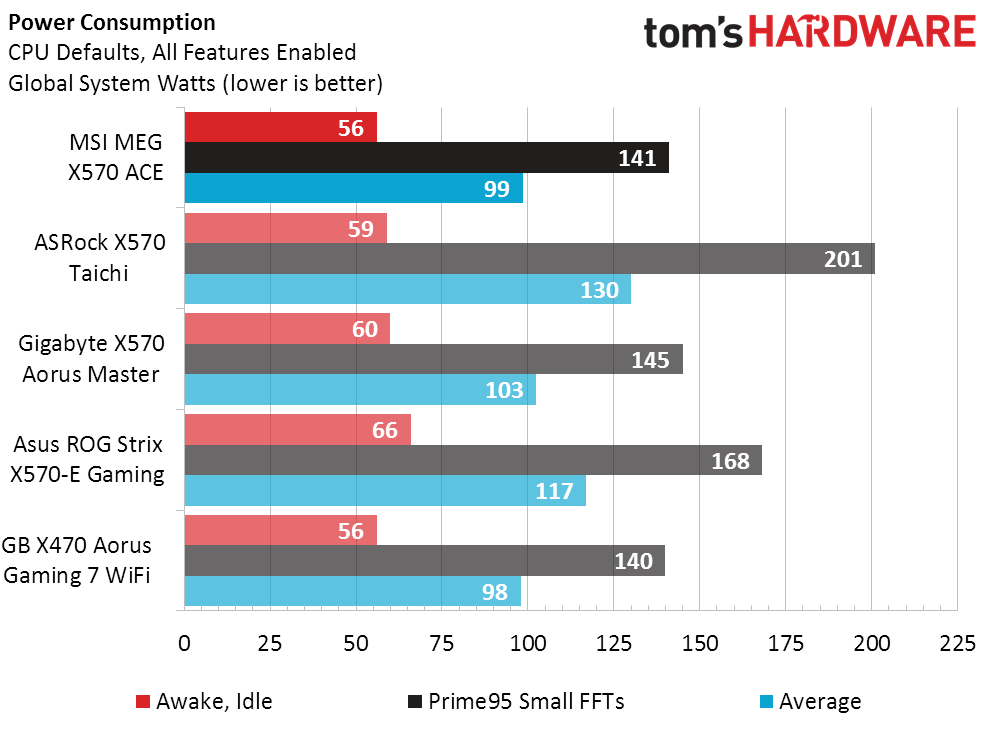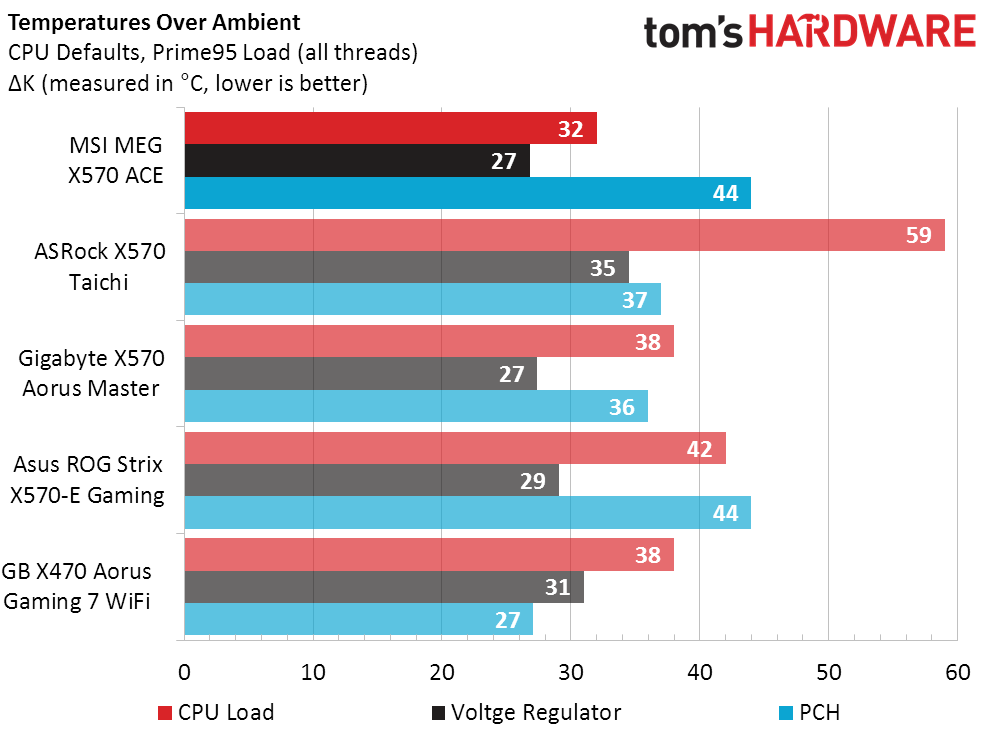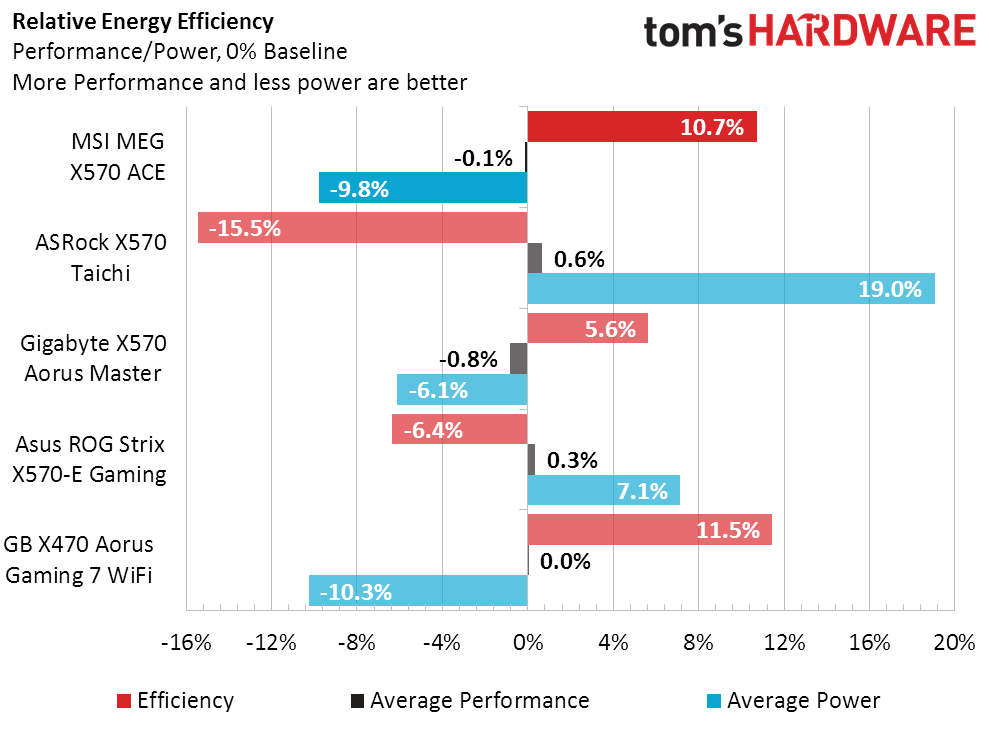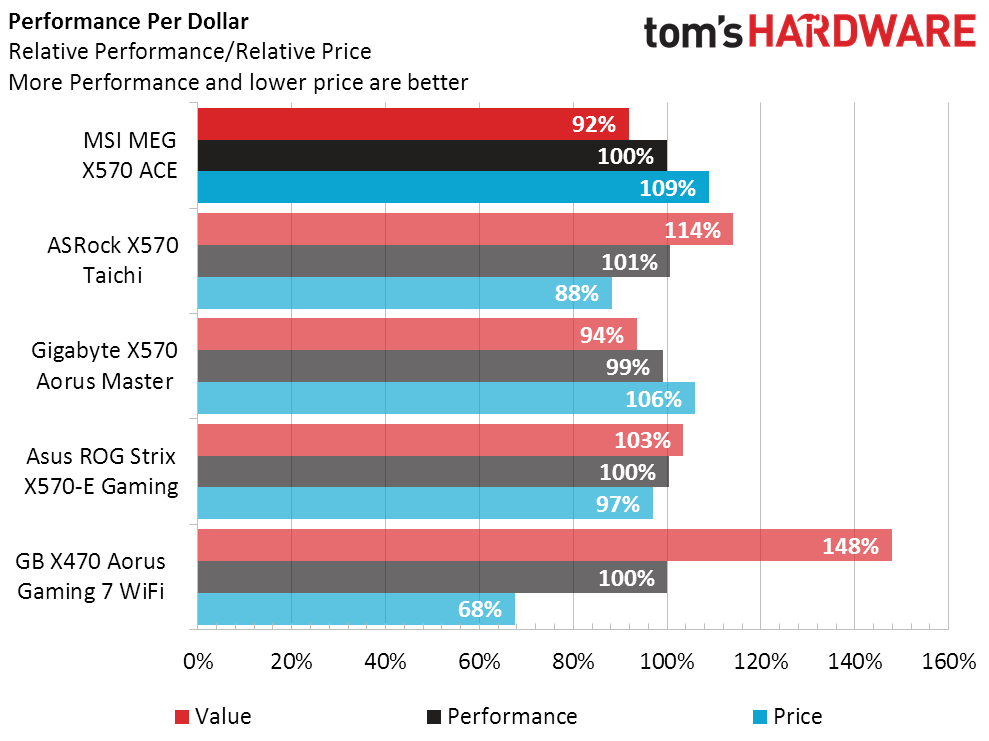MSI MEG X570 Ace Review: Memory Speed Master?
Why you can trust Tom's Hardware
Benchmark Results and Final Analysis
Gigabyte’s GeForce RTX 2070 Gaming OC 8G and AMD’s Ryzen 7 3700X update the hardware configuration of our most-recent X470 test system, while a newly configured test suite brings all the compatibility benefits of Microsoft’s latest Win10 patches.
3DMark And PCMark
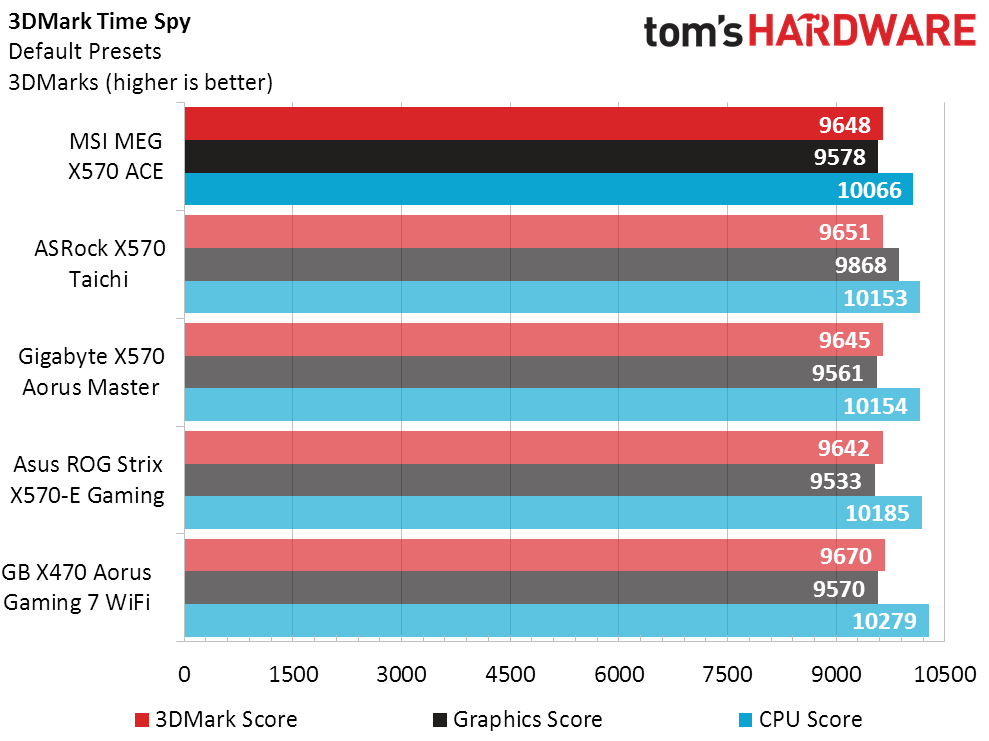
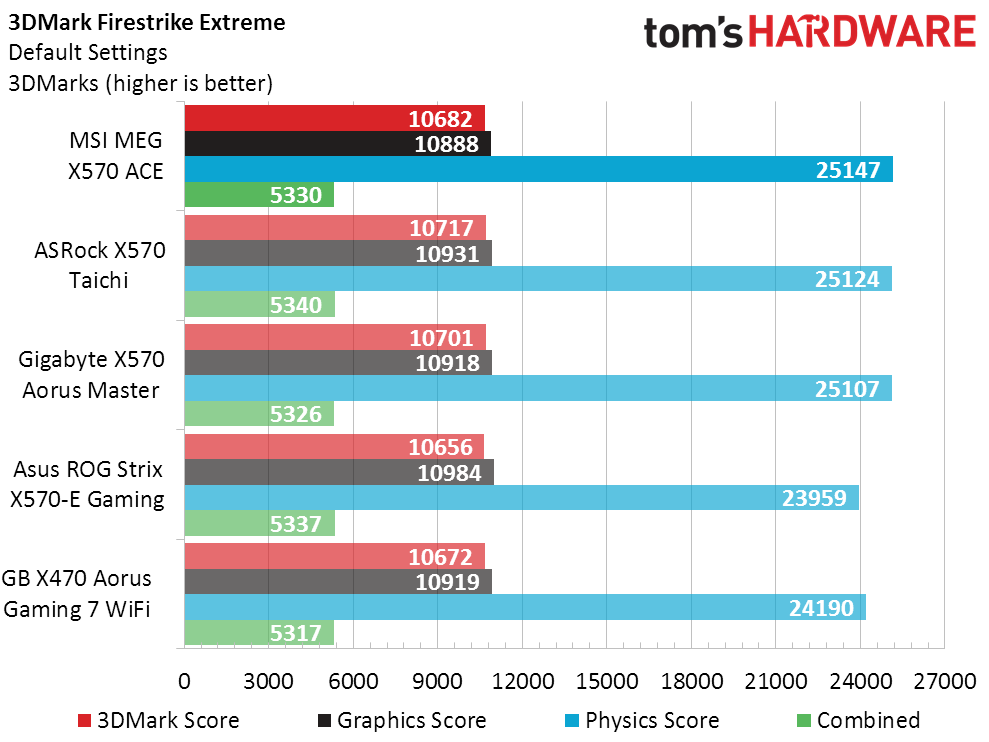
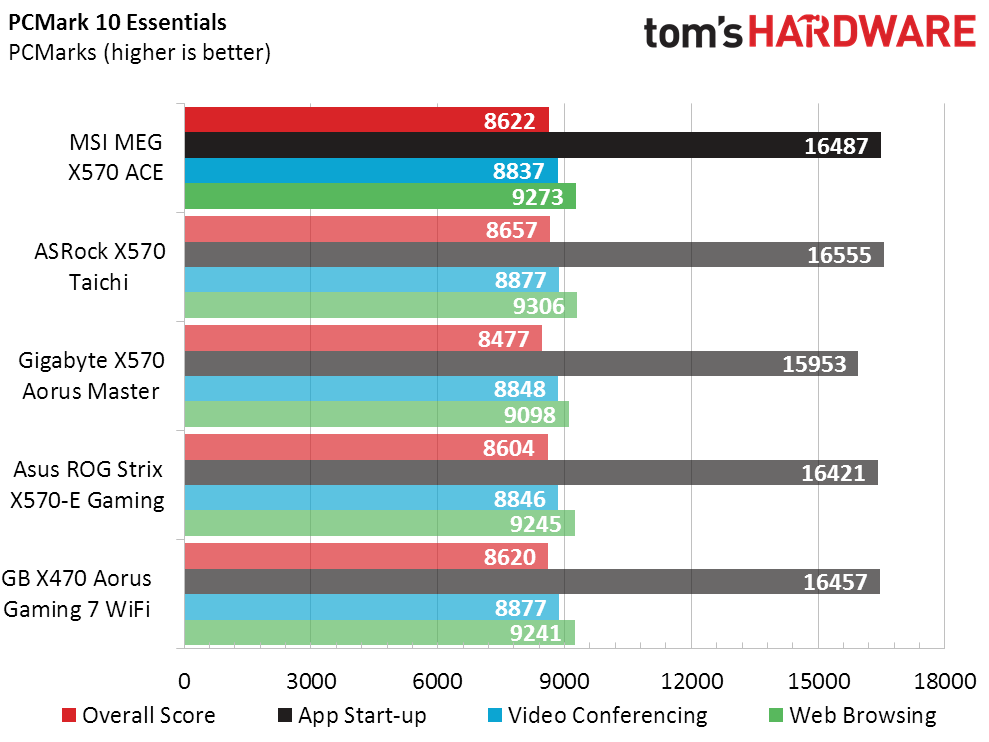
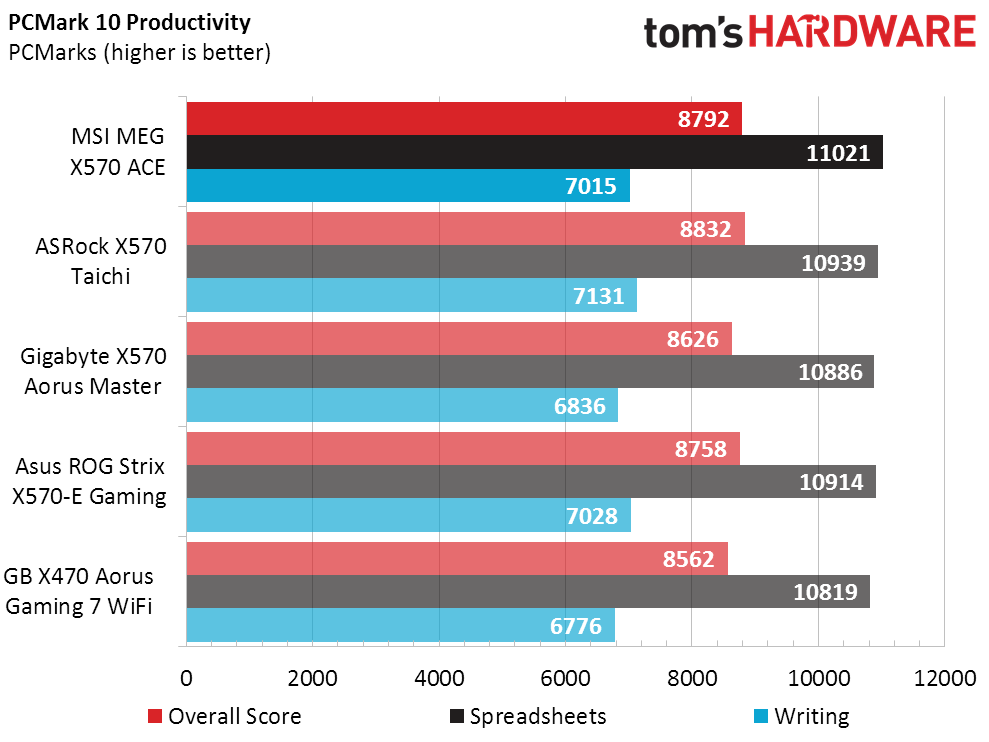
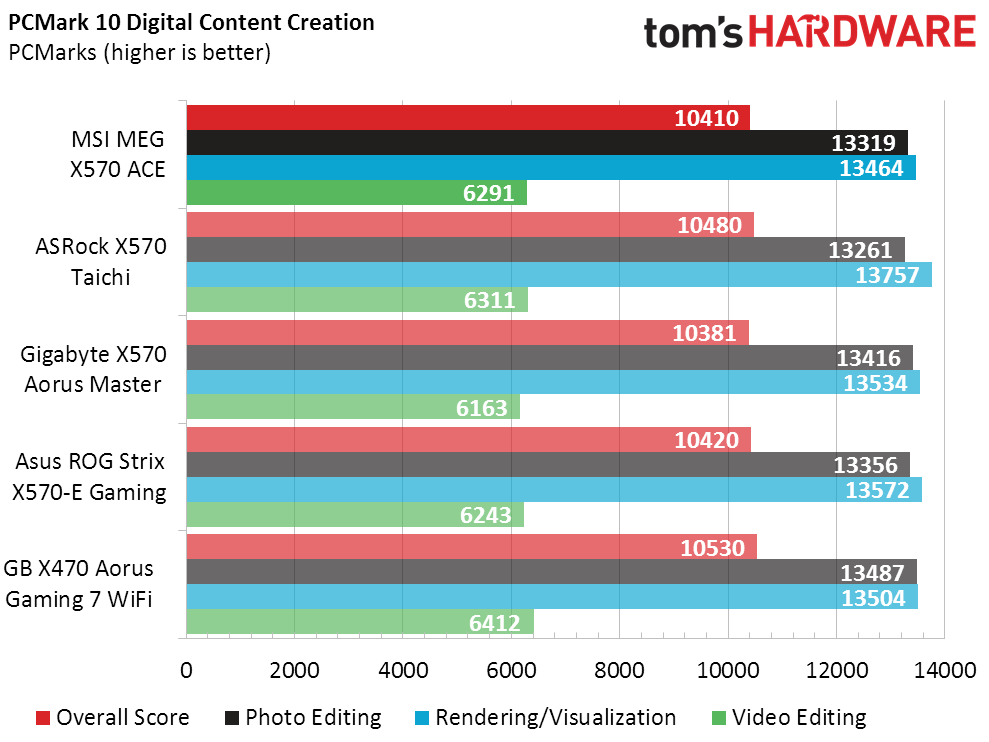

Miniscule performance differences displayed throughout the 3DMark and PCMark tests indicate that users are better off making their purchase decisions based on other criteria, such as connector availability and memory overclocking, rather than baseline performance.
3D Games
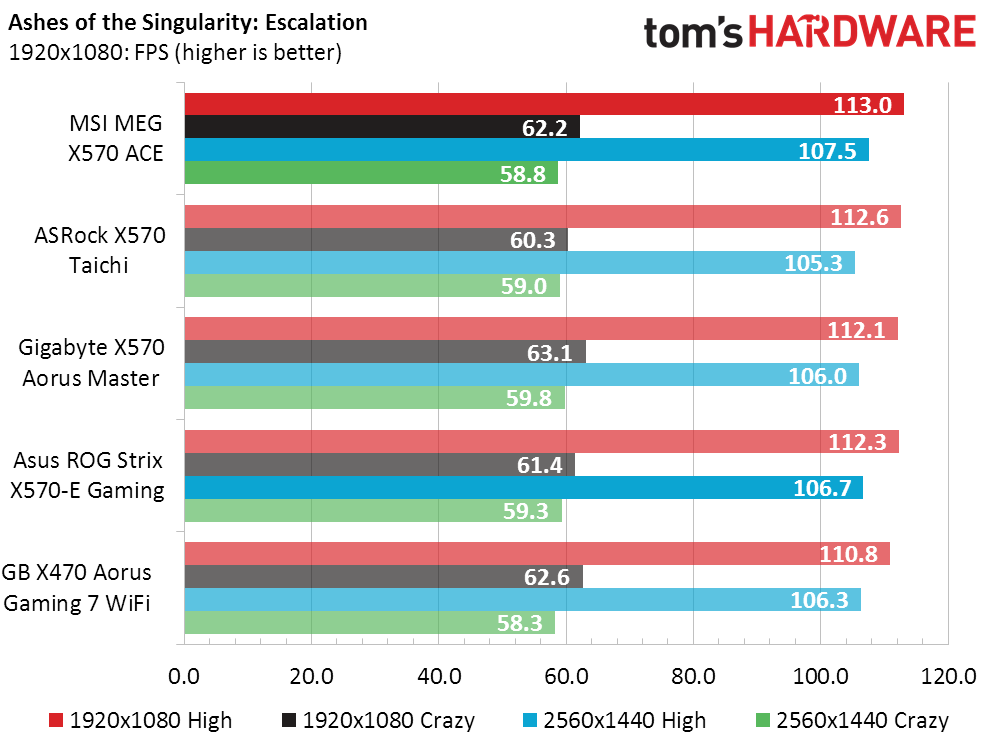
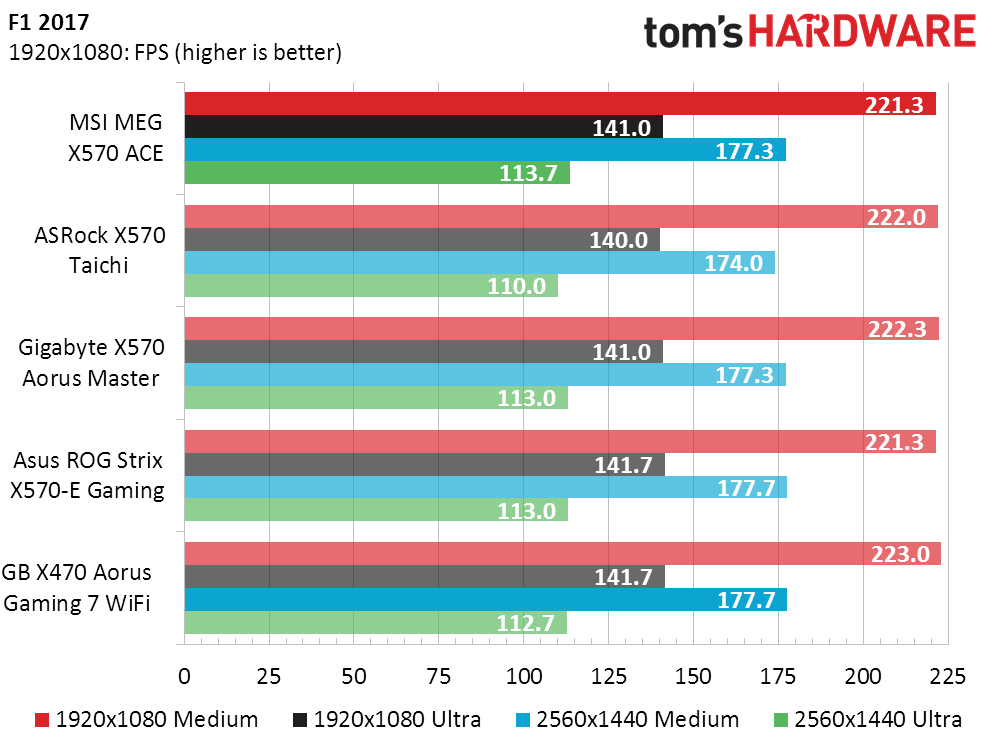
The point of motherboard benchmarks has become a search for problems rather than solutions, since most program performance is dictated by the hardware these boards share. The closest thing we see to a problem in gaming is that the MEG X570 Ace takes a marginal lead over the other boards at our lower test settings of Ashes, at both resolutions.
Mixed Applications

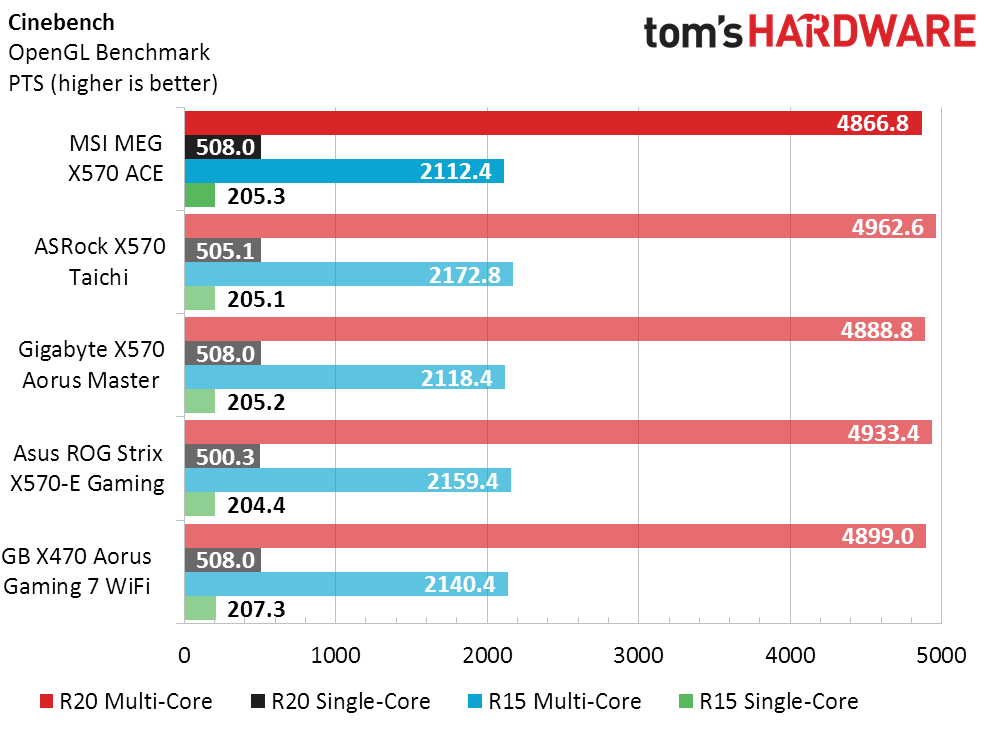
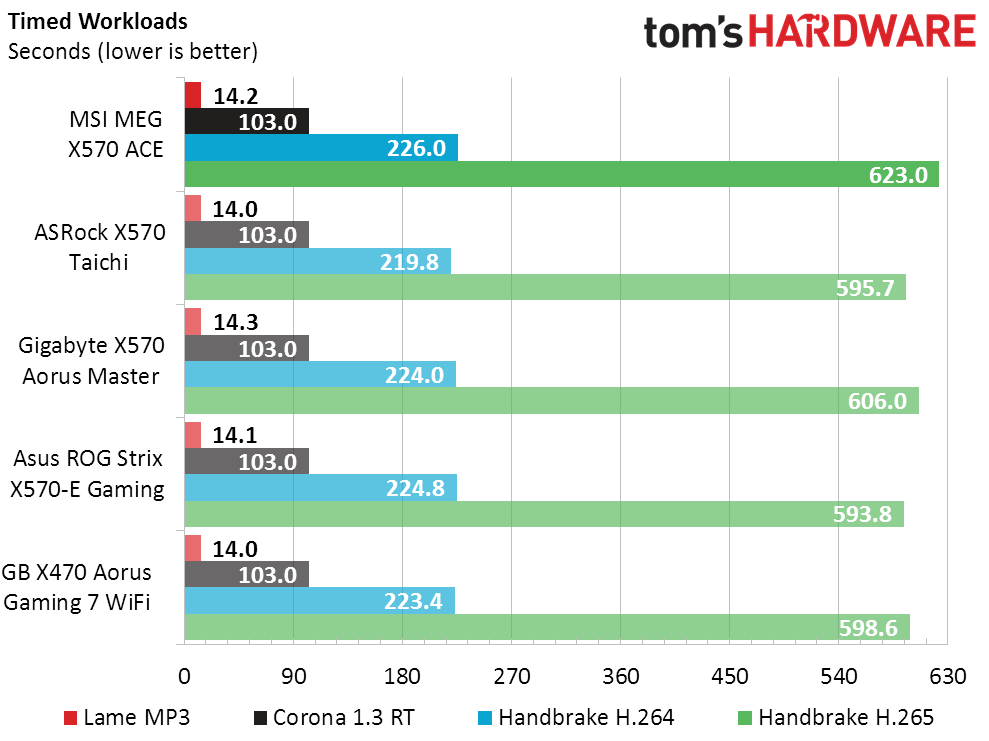
The MEG X570 Ace fairs well in 7.Zip’s integrated benchmark (higher is better), but falls behind nearly 4% in our Handbrake timed test (fewer seconds are better). That loss combines with a smaller one in Handbrake H.264 and class-average results in Lame and Corona to reduce the Ace’s timed application loss to less than 3%.
Power, Heat And Efficiency
The MEG X570 Ace pulls the lowest full-load power numbers, but does so by using a 1.064V CPU core at a 3.8 GHz clock rate. If those lower settings are affected by both workload intensity and duration, it could explain why the board lost in our lengthy H.264 performance test and was even more behind in our lengthier H.265 test.
MSI’s lower voltage and clock gave it the lowest CPU temperature. ASRock chose to push CPU clock to its default 4.1 GHz limit at firmware defaults, suffering both the power and thermal deficits as a result. Gigabyte and Asus boards use similar voltage to the X570 Ace, but at 3.90 and 3.95 GHz respectively.
Chokes are the hottest components on each of these boards’ voltage regulators, and since those are easily measured with an infrared thermometer, those results are shown. Software reported that the MEG X570 Ace had the highest MOSFET temperature at 26 degrees over-ambient, followed by the X570 Aorus Master at 23 degrees and X570 Taichi at 16 degrees over ambient. But we find our thermometers to be far less biased.
Get Tom's Hardware's best news and in-depth reviews, straight to your inbox.
With a performance average that’s less than 1% below the class average and a power savings of nearly 10% of class average, the MEG X570 Ace is the most-efficient X570 board tested. The old X470 model saved a bit more power, but does so in part by having a less-elaborate chipset (with no PCIe 4.0 support).
Final Thoughts
The MEG X570 Ace is priced $10 higher in USA than the X570 Aorus Master, but it shouldn’t be. Even though it has a slightly larger voltage regulator and overclocks our memory better, it lacks some of the Gigabyte board’s extra features such as dual thermistor leads and accompanying onboard headers. Most of these boards features are identical in most other ways, though the MSI board ditches the pretense of six SATA headers for four (two of Gigabyte’s are disabled by the third M.2 drive). And Gigabyte ditches the pretense of two PCIe 4.0 x1 slots for one (only one of MSI’s x1 slots can be used at a time). Then again, some users will look at those extra connectors and see more installation flexibility.
Perhaps this is why MSI’s MEG X570 Ace is £20 cheaper than the X570 Aorus Master in UK, but what we’re seeing is two boards that are so similar in both features and price that neither overwhelms the other. MSI achieved a far higher DRAM O/C, but its class-leading OC had the lowest in-class bandwidth. And its paltry 25 MHz improvement in CPU clock is just that. We’d say pick your favorite based on whichever connector placement you prefer.
All that said, excellent bandwidth scaling over a wider range of data rates forces us to consider the MEG X570 Ace for an upcoming AMD memory deep dive, despite its competitive loss in maximum bandwidth. We’d love to hear your thoughts in our response thread below.
Image Credits: Tom's Hardware
MORE: Best Motherboards
MORE: How To Choose A Motherboard
MORE: All Motherboard Content
-
thegr8anand Aorus Master is better imo but Msi is running a promotion where they give CM ML240R AIO on purchase of Meg Ace.Reply
https://www.msi.com/Promotion/I-Love-You-3000-AMD -
DRB Trading There was one (to me critical) missing measurement in MSI MEG X570 Ace review ... sound level emanating from PCH fan. Having read several whining PCH fan the Aorus X570 Master (reviews) ... to me THIS related sound level measurement would be the deal breaker ... not a probably imperceptible mhz of performance here or there. From the test result posted ... one could intuit that the position of fan results in poorer cooling ... but the PCH fan placement gains from unobstructed output positioning and perhaps better/larger fan design from MSI fan design experience. Since the PCH temp seems to run higher ... the question is open if this causes the fan to work harder and the term wear and tear implications. I'm replacing a system now as much as anything because of noise. New system case will be Fractal Design S2 ... may replace case fans with Noctura ... depending on performance.Reply -
Crashman Reply
I'm sorry, but I couldn't hear the MSI PCH fan above the noise of other system fans. I could spin it up manually to hear it whine, but that's not very realistic considering that it never hit a high RPM during our tests. I've heard that the real heat starts coming when you've attached multiple PCIe 4.0 devices, but we don't have multiples yet.DRB Trading said:There was one (to me critical) missing measurement in MSI MEG X570 Ace review ... sound level emanating from PCH fan. Having read several whining PCH fan the Aorus X570 Master (reviews) ... to me THIS related sound level measurement would be the deal breaker ... not a probably imperceptible mhz of performance here or there. From the test result posted ... one could intuit that the position of fan results in poorer cooling ... but the PCH fan placement gains from unobstructed output positioning and perhaps better/larger fan design from MSI fan design experience. Since the PCH temp seems to run higher ... the question is open if this causes the fan to work harder and the term wear and tear implications. I'm replacing a system now as much as anything because of noise. New system case will be Fractal Design S2 ... may replace case fans with Noctura ... depending on performance.
Edit: What do you think of using this board for memory evaluations? It has less bandwidth on our overclocked DDR4-2933, but it hits higher data rates and scales smoothly from DDR4-3733 to DDR4-4333. The other boards won't do that. -
Andreas.Kefalas Hey, this is the best comparison of the mainstream boards i've seen so far, thank you! Any chance to also include the C8H? This would be awesome....Reply -
Crashman Reply
I don't have one. Joe Shields is taking over the X570 series with a slight difference in hardware that means when he gets it, you'll only be able to compare his other results.Andreas.Kefalas said:Hey, this is the best comparison of the mainstream boards i've seen so far, thank you! Any chance to also include the C8H? This would be awesome.... -
underpickled I have this motherboard, and I got about 41 GB/s with the 3600 MHz A-XMP profile (16-16-16-36 timings). Tuning with the Ryzen RAM calculator (16-16-16-32, plus other tuning) got me to 45 GB/s. I don't think max frequency is really the key here in terms of measuring memory bandwidth. Seems to me it's not much of a comparison unless the motherboards are comparing with the same timings, then maybe another test with max OC.Reply
